Homemade Nigiri: Tips, Tricks, and Best Nigiri Sushi Recipes
on Apr 05, 2023, Updated Nov 21, 2023
This post may contain affiliate links. Please read my disclosure policy.
An easy and complete homemade Nigiri tutorial with lots of tips and tricks. Unlike Maki sushi, nigiri isn’t rolled. Instead, it’s comprised of a thin slice of raw or cooked seafood like salmon or shrimp atop a mound of vinegary rice. You’ll learn everything about Japanese nigiri including the difference between nigiri and sashimi, and how to make perfect nigiri at home.
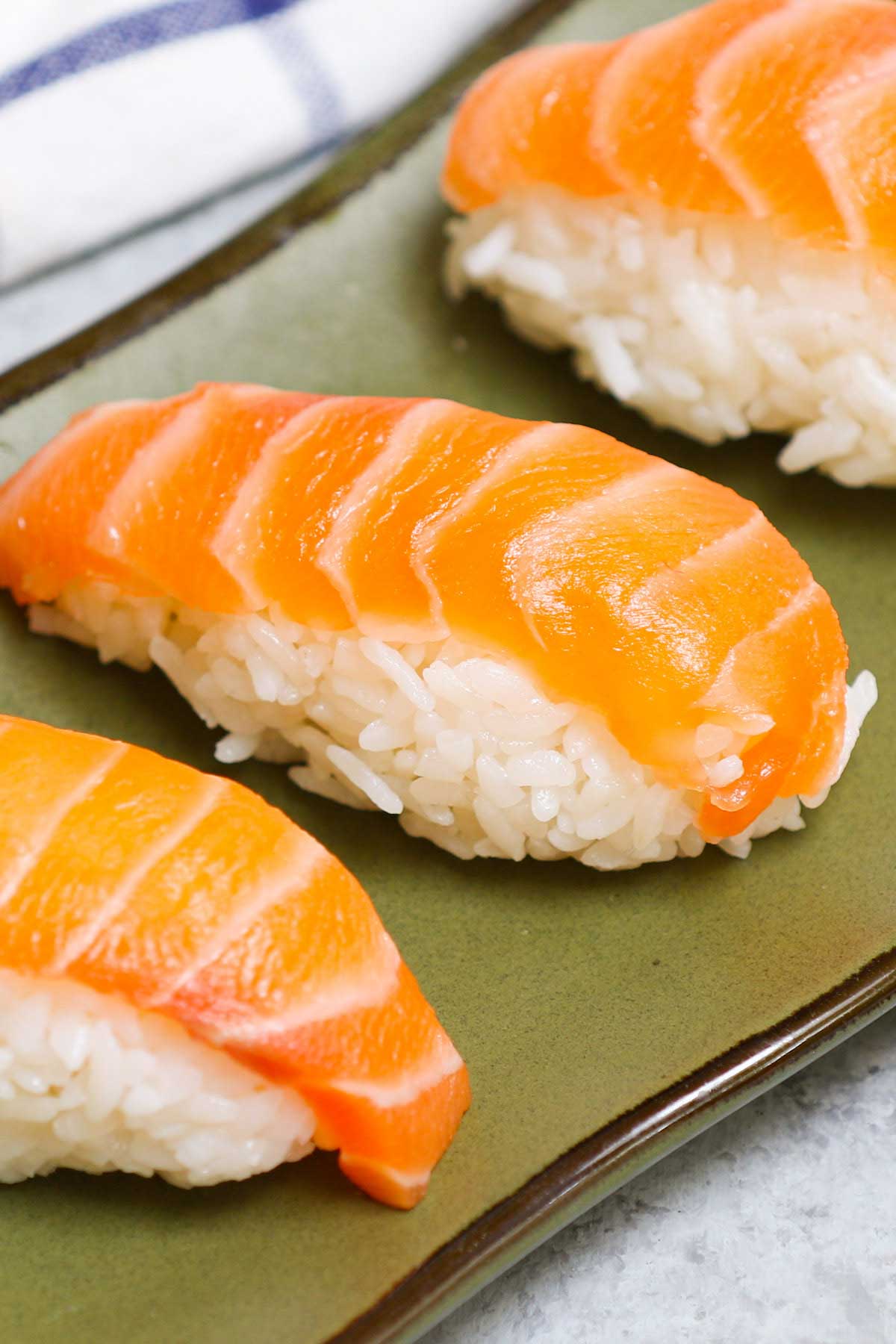
Homemade Nigiri: Tips & Tricks
Nigiri is perfect for no-frills sushi lovers. You don’t have to go to Japanese restaurants for the delicious Nigiri as it’s so easy to make at home and there are no extra ingredients like avocado or cucumber.
With nigiri, you get to savor all the delicious flavors of fresh fish, complemented by a mouthful of tasty sushi rice. I’ll walk you through each step and make your nigiri adventure easy and fun!
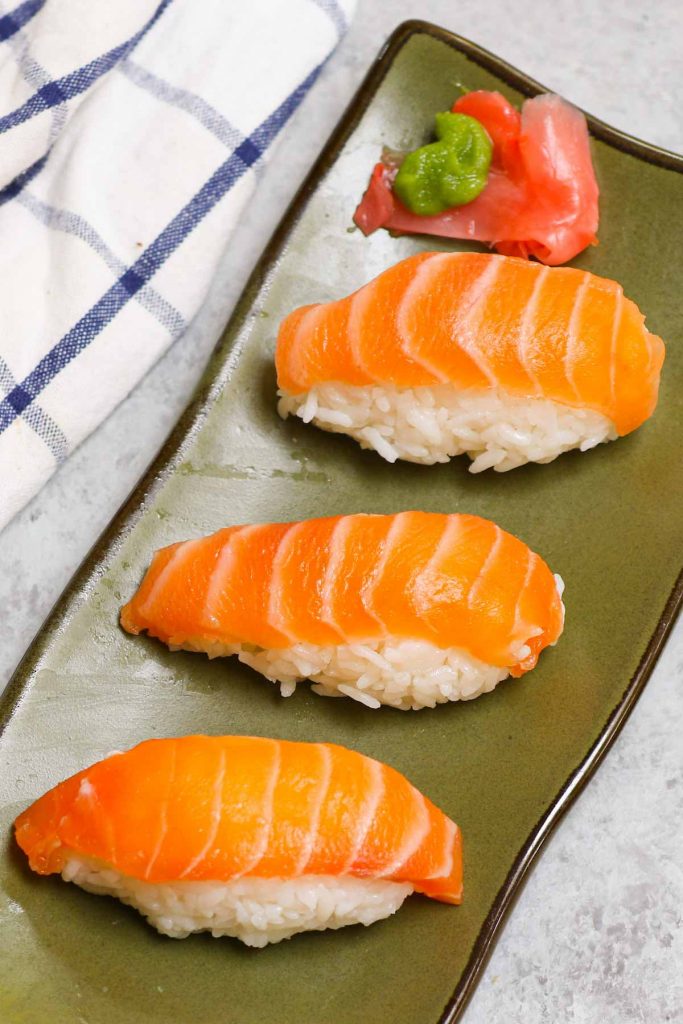
What is Nigiri?
Nigiri is a variety of sushi made by layering a thin slice of fish on top of a small mound of rice. This kind of sushi is quite often made with raw fish such as salmon or tuna, but may also be made with cooked fish. Nigiri is also sometimes made with eggs, shrimp or eel. Each piece of nigiri is eaten whole in one bite.
Homemade Nigiri Staples
- Sushi Rice: Look for authentic short-grain Japanese sushi rice for the best result. Other types of rice are less likely to hold their shape, causing your nigiri to fall apart.
- Sushi Vinegar: You may get store-bought sushi vinegar in the Asian aisle of your supermarket. Alternatively, you may combine white vinegar with salt and sugar to make your own sushi vinegar.
- Wasabi: This is the spicy green paste commonly served with sushi to help balance out the taste of the fish.
- Pickled Ginger: Also known as Gari, pickled ginger cleanses the palate and enhances the flavor of nigiri. Look for pickled ginger or sushi ginger in the Asian aisle of your supermarket.
- Soy Sauce: Nigiri can be dipped in soy sauce for a burst of umami flavor. You may use dark or light soy sauce depending on your preference.
- Eel Sauce: This sweet, thick sauce is delicious with eel or raw fish. Eel sauce can be picked up at the supermarket or made at home. Simply combine soy sauce, mirin, sugar and sake.
- Nori (Seaweed Sheet): Strips of nori are often used to wrap around your nigiri. Nori is sold in packs in most grocery stores.
- Sharp Knife: It’s important to use a very sharp knife when slicing your fish. Use a non-serrated knife for best results.

Our Favorite Topping Ingredients for Homemade Nigiri Sushi
- Salmon: Look for fresh, succulent cuts of sashimi-grade salmon. If you’re avoiding raw fish, try using smoked salmon or canned salmon instead.
- Tuna: Use vibrantly colored sashimi-grade tuna for your homemade nigiri, purchased from a reputable fishmonger. You may use cooked slices of tuna if you prefer.
- Shrimp (Ebi): Use jumbo shrimp to make your ebi (10-15 per pound). Purchase raw shrimp that still have the shells on. You will need to boil the shrimp in their shells, then remove and butterfly the shrimp.
- Tamago: Tamago is a fluffy Japanese rolled omelette made with eggs, mirin, sugar and rice vinegar.
- Yellowtail (Hamachi): Ask for sashimi-grade yellowtail, also known as hamachi.
- Eel: Also known as unagi, eel is a popular topping for nigiri sushi. You may use freshwater or seawater eel for this recipe.
- Octopus: Also known as “tako” this topping is a tasty option for the more adventurous sushi lover. Look for fresh octopus in your local seafood market.
- Uni: Uni is the edible portion of meat inside a sea urchin. They are usually yellow or orange and have a custard-like consistency. Purchase fresh uni from your local fish market.
How to Make Nigiri at Home
Making nigiri at home is a lot easier than you may think. Once you’ve mastered the technique, you’ll be able to recreate
Step 1: Cook the Rice
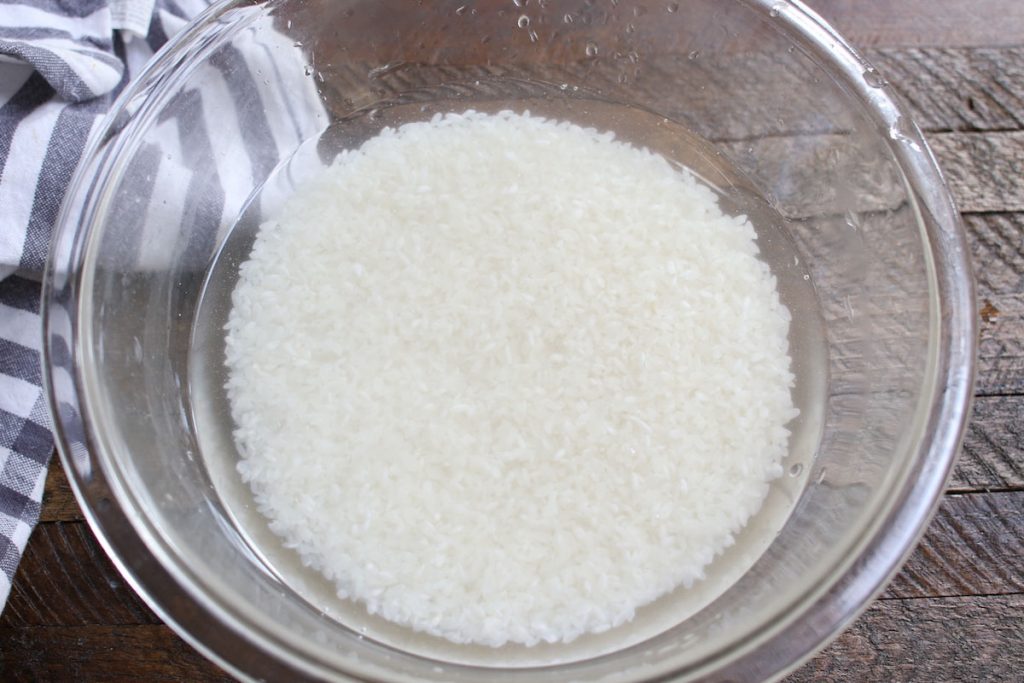
Use authentic short-grain sushi rice for the best result. It’s best to use 1 cup of water for each cup of rice and cook until it’s fluffy. Transfer the cooked rice to a bowl and allow it to cool a bit.
Step 2: Season the Rice
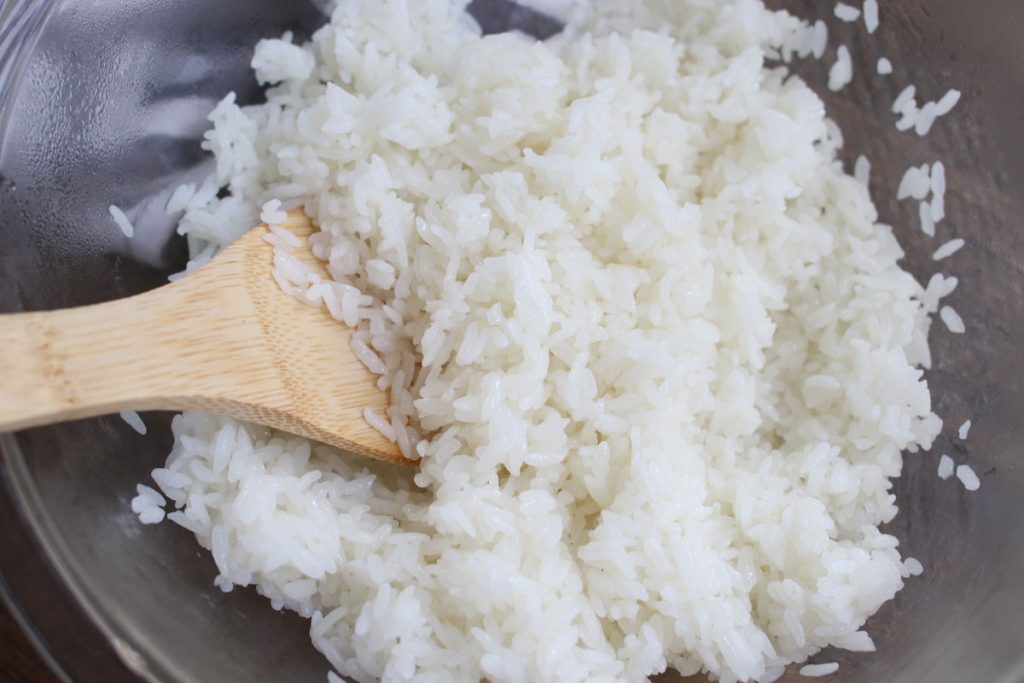
Season the rice with sushi vinegar. This helps to give the rice its delicious umami flavor. If you don’t have sushi vinegar, season with white vinegar, salt, and sugar.
Step 3: Prepare the Topping (Slice the Fish, or Cook the Eggs, etc.)
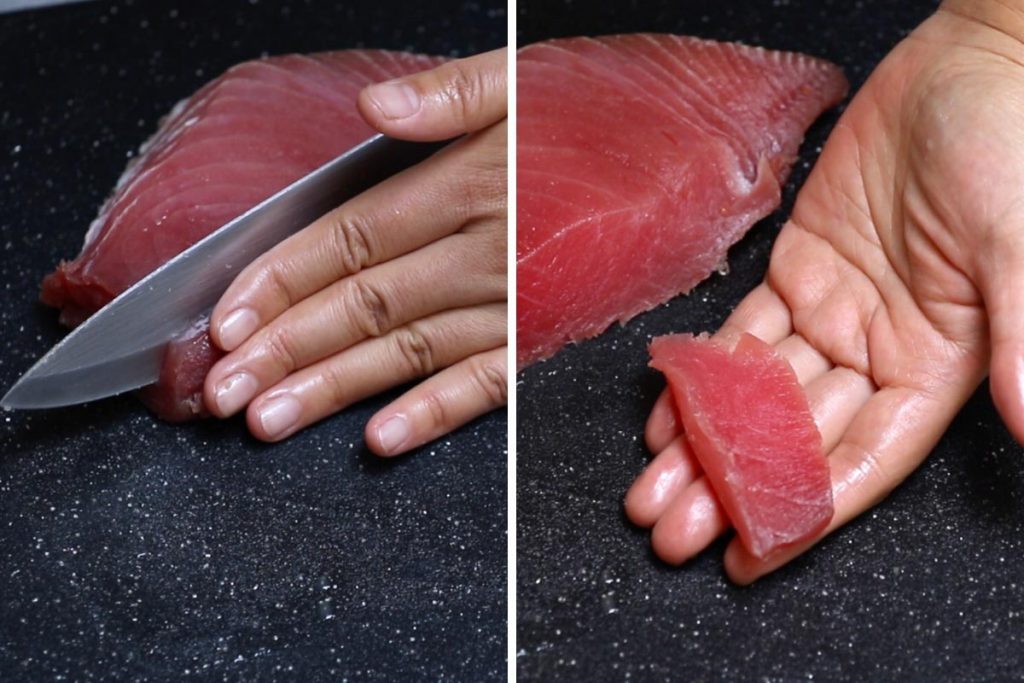
If you’re making Tamago nigiri, go ahead and prepare your eggs. If you will be using fish such as salmon, tuna, or yellowtail, use a very sharp knife to slice your fish. Cut the fish into pieces that are about 3 inches long, 1 inch wide, and 1/4 inch in thickness.
Step 4: Shape the Rice
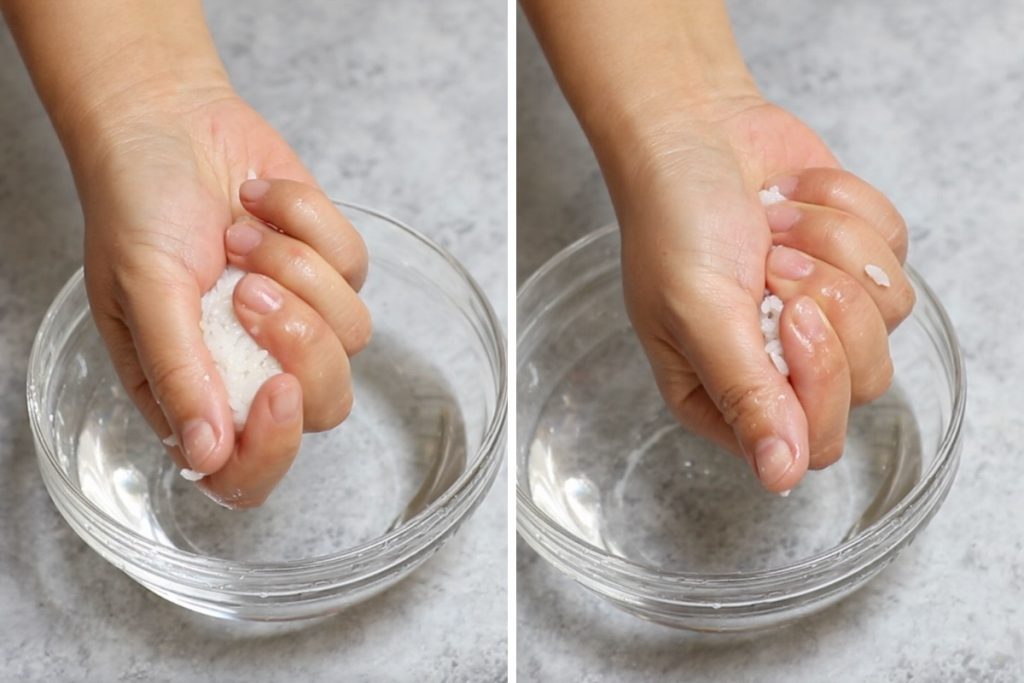
Scoop out about 3 tablespoons of rice and place in your hand. Squeeze the rice until it forms an oval shape. Use your hand to flatten the bottom.
Step 5: Assemble
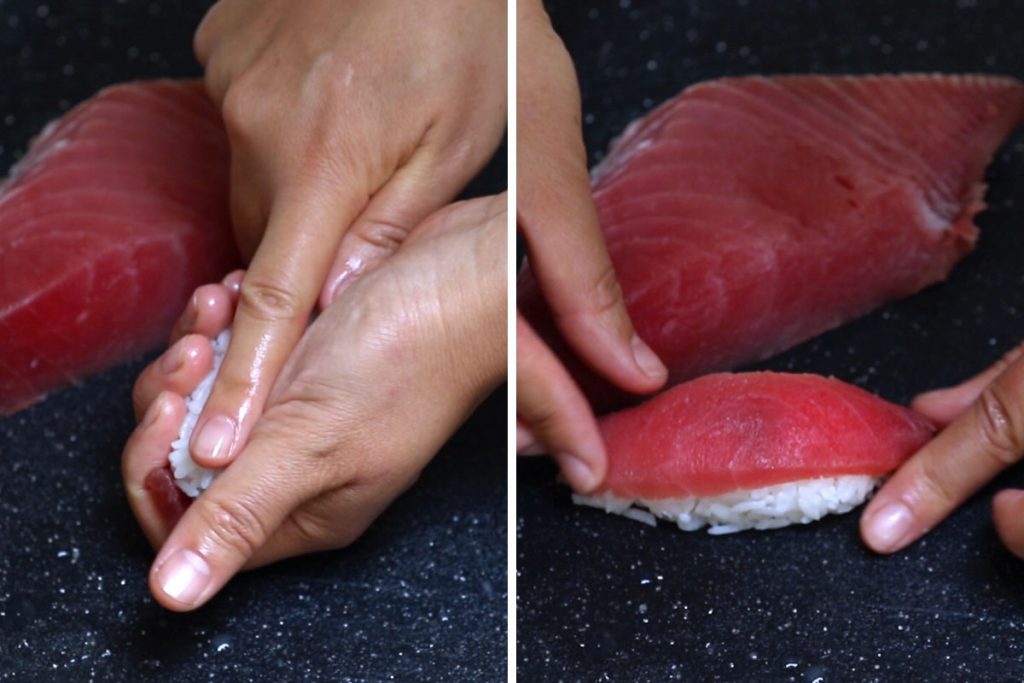
Assemble your nigiri by placing your topping flat against your palm. Press the rolled sushi rice onto the topping. Flip over the roll so that the topping is on top.
Step 6: With or Without Nori Seaweed
Depending on your preference, nigiri sushi can be made with or without nori seaweed. You may wrap a thin strip of nori around each piece of nigiri. This gives your sushi a more traditional look and the nori helps keep the topping and rice together.
Pro Tips for Making the Perfect Nigiri
- Use high-quality Japanese short-grain sushi rice and add less water than cooking the regular rice. I recommend a 1:1 ratio between rice and water so that your rice won’t get mushy.
- Cut the raw fish against the grain into the right thickness for nigiri. If your salmon or tuna is too thick, it won’t be shaped properly on top of the rice, but if it’s too thin, it will lose the flavor. The best thickness is about 1/4 inch.
- Wet your hands with Tezu water before handling rice. It’s made with water and vinegar.
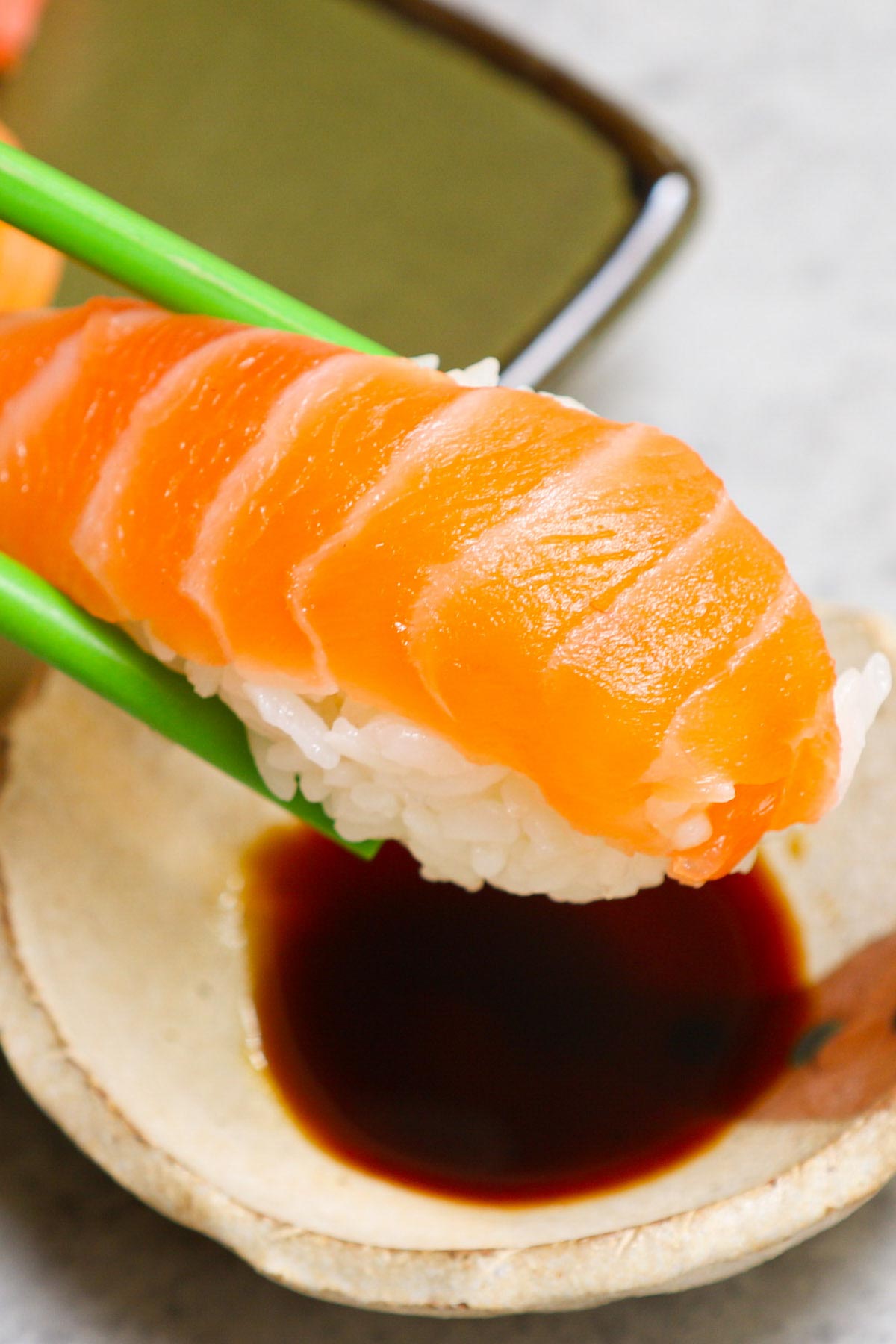
Nigiri vs Sashimi
The difference between nigiri and sashimi is that nigiri is made with a ball of sushi rice, while sashimi is served without rice. Sashimi is just a thin slice of fish. Sashimi is not considered sushi, due to the absence of sushi rice.
Nigiri vs Sushi vs Maki
Sushi is the general term for Japanese delicacies that consist of rice, vinegar, and fish (or some other protein). Nigiri and Maki are both types of sushi. Nigiri is made by placing a topping of sliced fish or shrimp on top of a rounded ball of sushi rice. Maki, on the other hand, is rolled sushi that is cut into smaller pieces. The Boston Roll is an example of maki sushi.
Is Nigiri Sushi Healthy?
Nigiri is quite healthy in comparison to popular sushi rolls such as Volcano Rolls. Since nigiri is made with just two simple ingredients, it’s quite a healthy and wholesome dish. The fish used to make nigiri (such as salmon and tuna) are rich in healthy omega-3 fatty acids. On average one piece of nigiri has about 70 calories.
How Long Does Nigiri Last?
Nigiri is best eaten immediately after preparation. As you may imagine, raw fish spoils quite easily. If you have leftovers, store them in the fridge and consume within 24 hours.
Best Nigiri Recipes You May Like
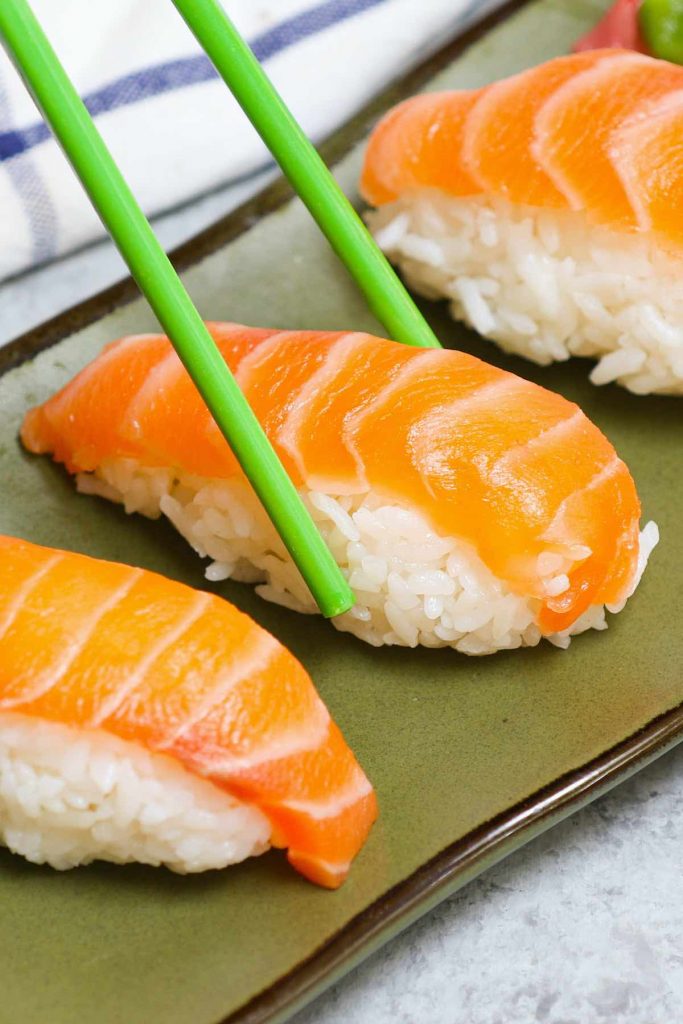
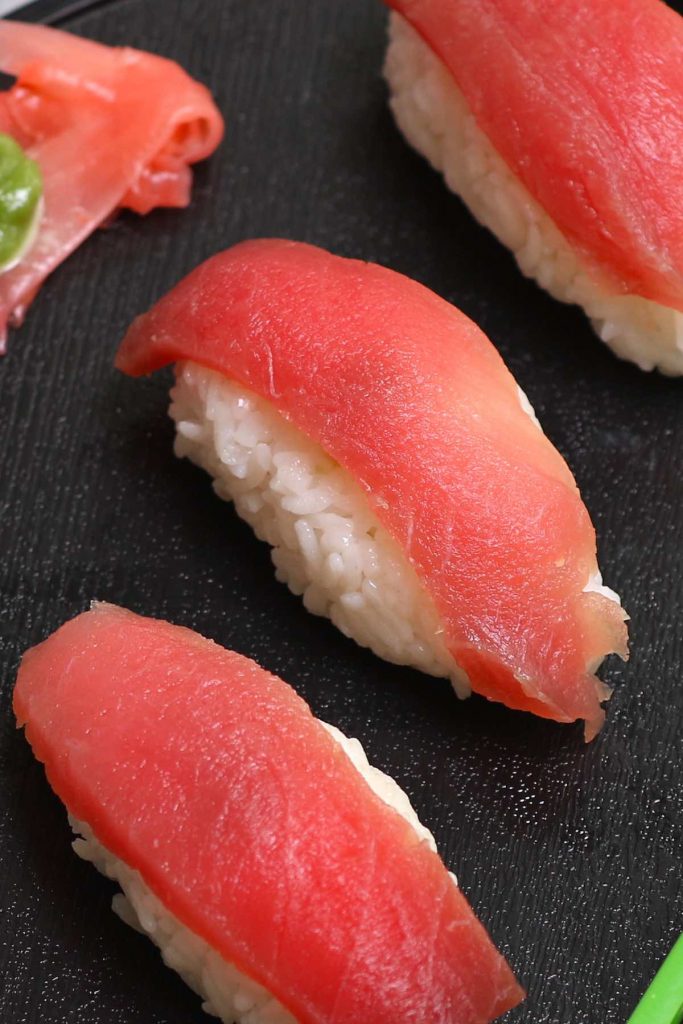
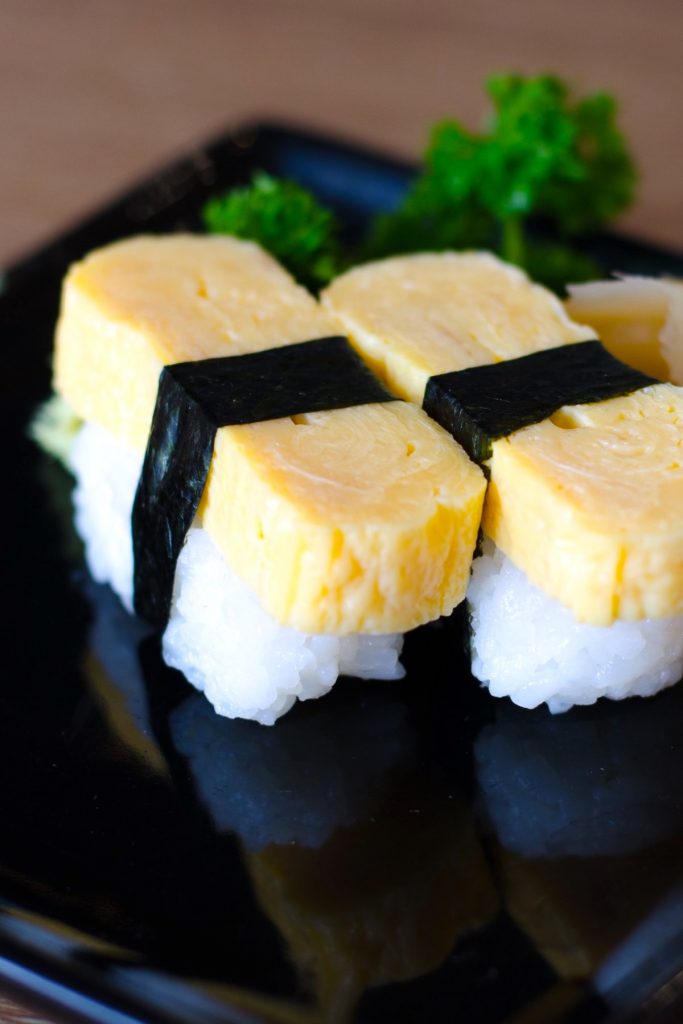
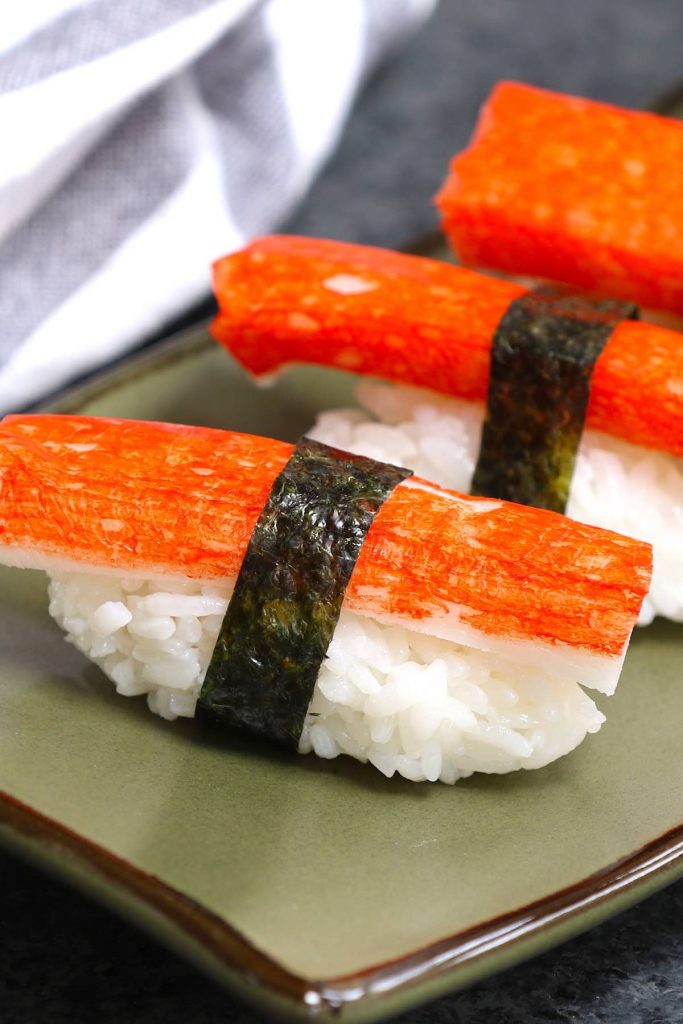

Best Homemade Nigiri Sushi Recipe
Ingredients
Nigiri-Making Staples
- Sushi Rice
- Sushi Vinegar
- Wasabi
- Pickled Ginger
- Soy Sauce
- Eel Sauce
- Nori Seaweed Sheet
- Sharp Knife
Most Popular Topping Ingredients: Choose Your Favorite
- Salmon
- Tuna
- Shrimp, Ebi
- Tamago, Egg
- Yellowtail, Hamachi
- Eel
- Octopus
- Uni
Instructions
- Step 1: Cook the Sushi Rice: Wash and rinse the rice with cold water. Add the rice and water to the rice cooker. Cook according to the instruction.
- Step 2: Season the Rice: Transfer the rice to a large bowl and let it cool down slightly. When it’s still very warm, stir in the sushi vinegar (or the mixture of rice vinegar and sugar).
- Step 3: Prepare the Topping: If you use raw fish, cut it against the grain, with an angle of 30 to 45 degrees. I recommend cutting it to 3-inch long, 1-inch wide, and 1/4-inch thick pieces. (You’ll need to adjust the angle from time to time to get the proper length and thickness.) If you make tamago nigiri, you’ll need to cook the egg first. See this post for details.
- Step 4: Shape the Rice: Place about 3 tablespoons of rice in your hand. Squeeze it together until it rolls into a firm oval shape. Make the bottom flat with the rounded top. (You can dip your hand in tezu water to prevent sticking.)
- Step 5: Assemble the Nigiri: Place the fish, egg, or veggie slice on the root of your fingers. Then take a pea-sized portion of wasabi, and spread it in the middle of the slice. Place the rolled sushi rice onto the topping slice, and bend your fingers to cover both the topping and rice together. Press down the rice using the index finger from the other hand. Turn the topping and rice and let the topping slice sit on top of the rice.
- Step 6 (optional): For some nigiri sushi such as Tamago, you can wrap a thin nori strip around the width of the nigiri to secure the topping to the rice. Serve with optional wasabi, soy sauce, along with pickled ginger.
Nutrition information provided is an estimate only and will vary based on ingredient brands and cooking methods used.
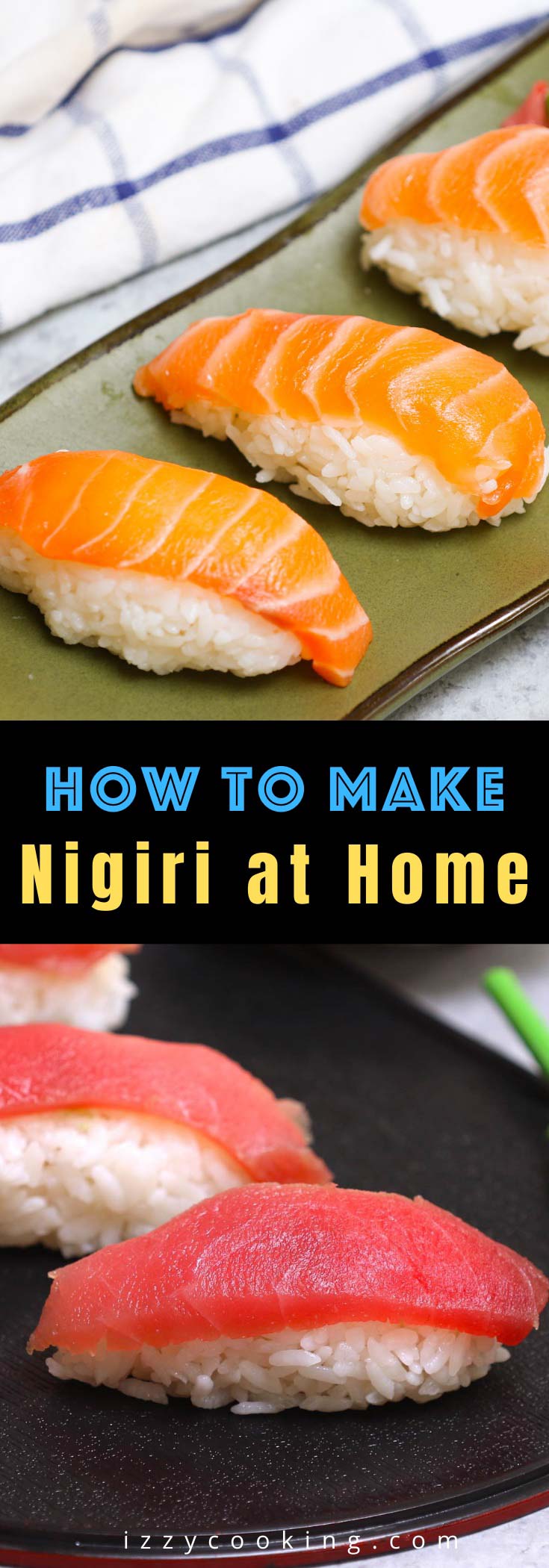
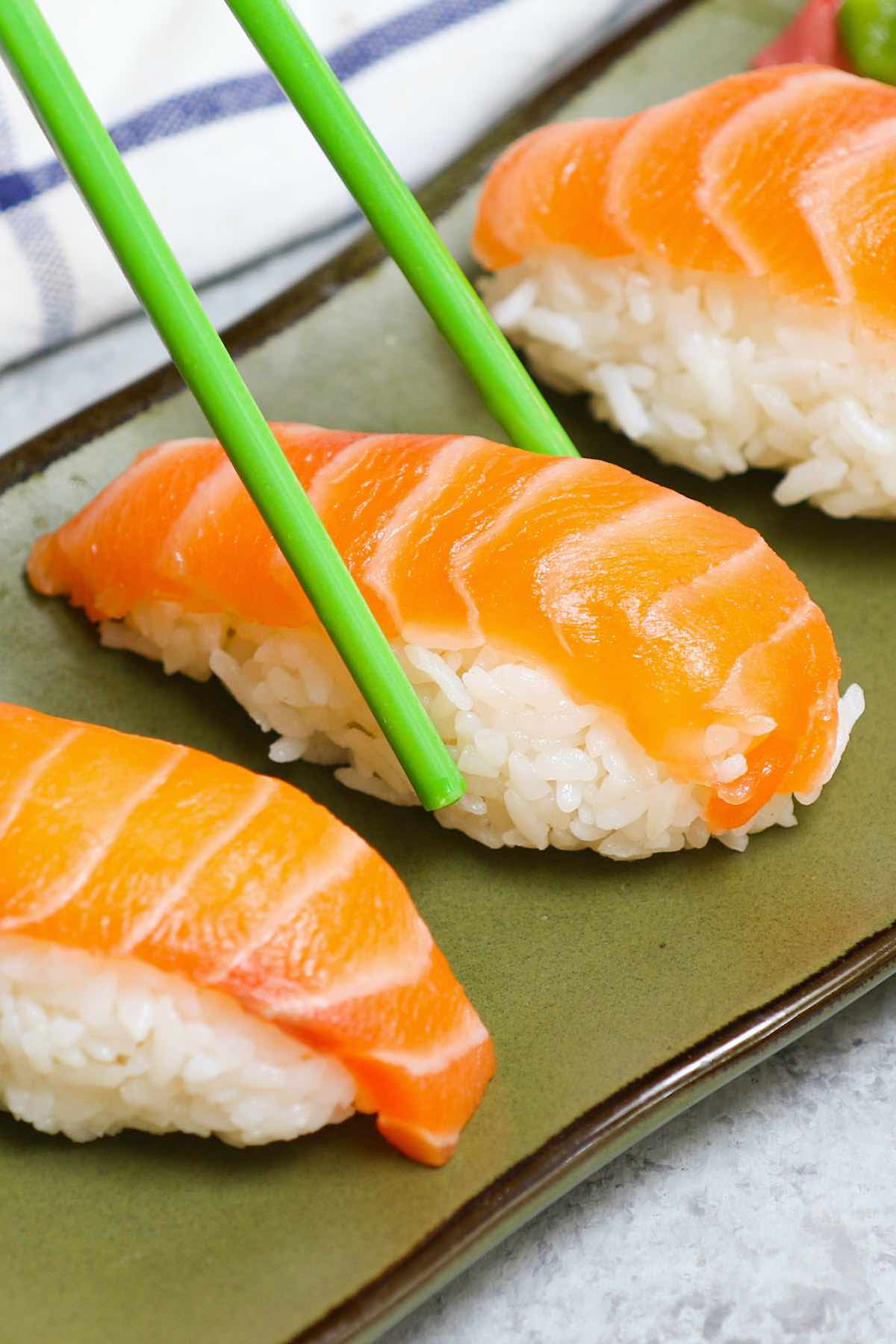
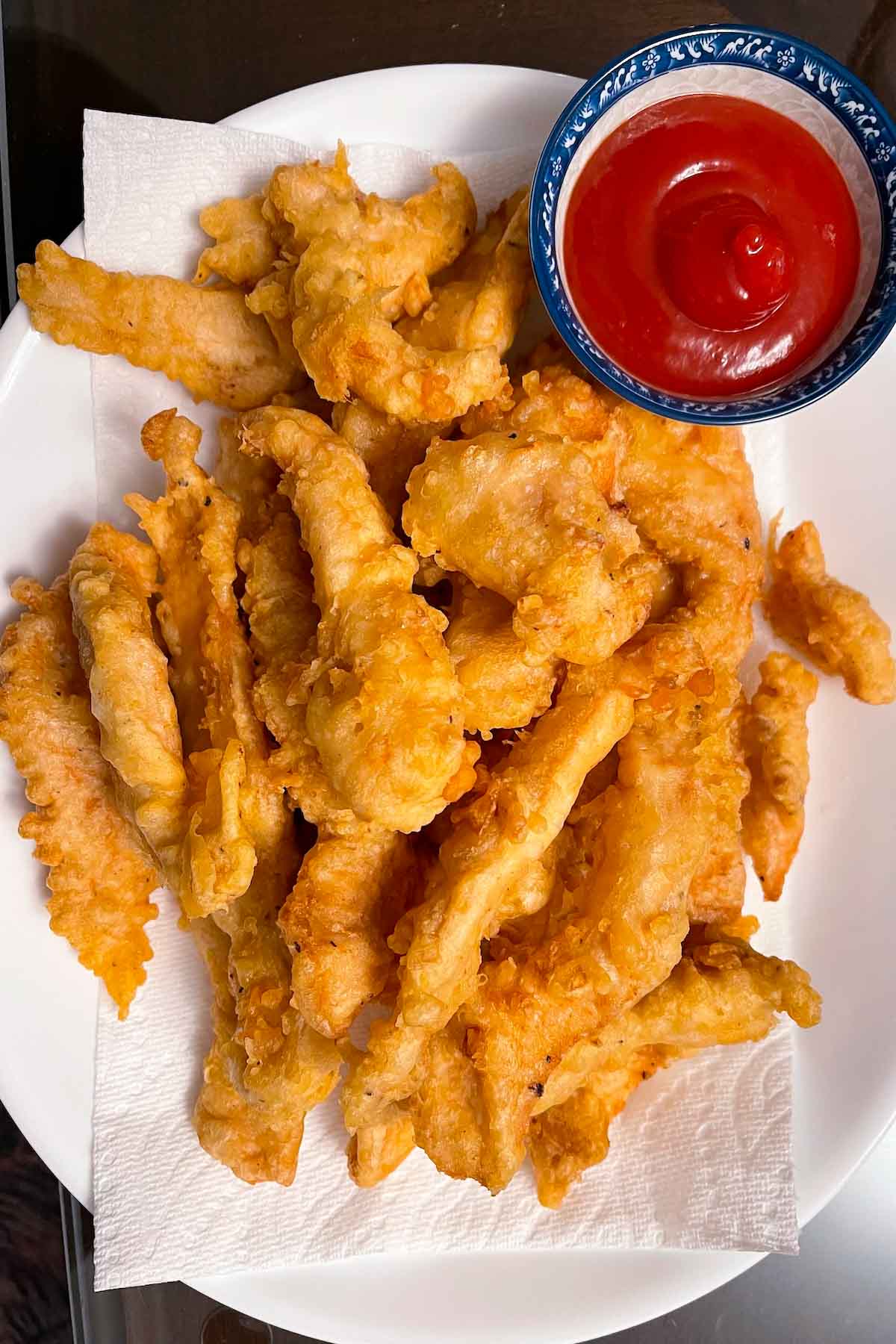
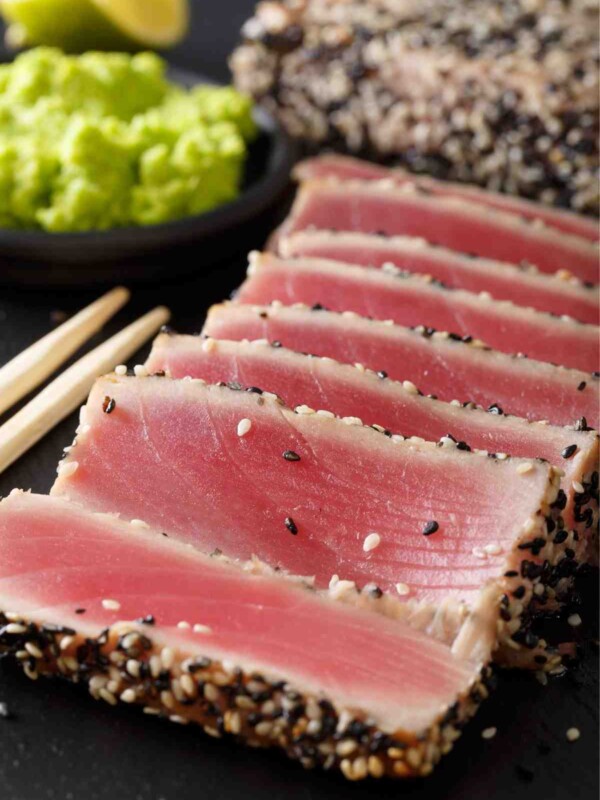
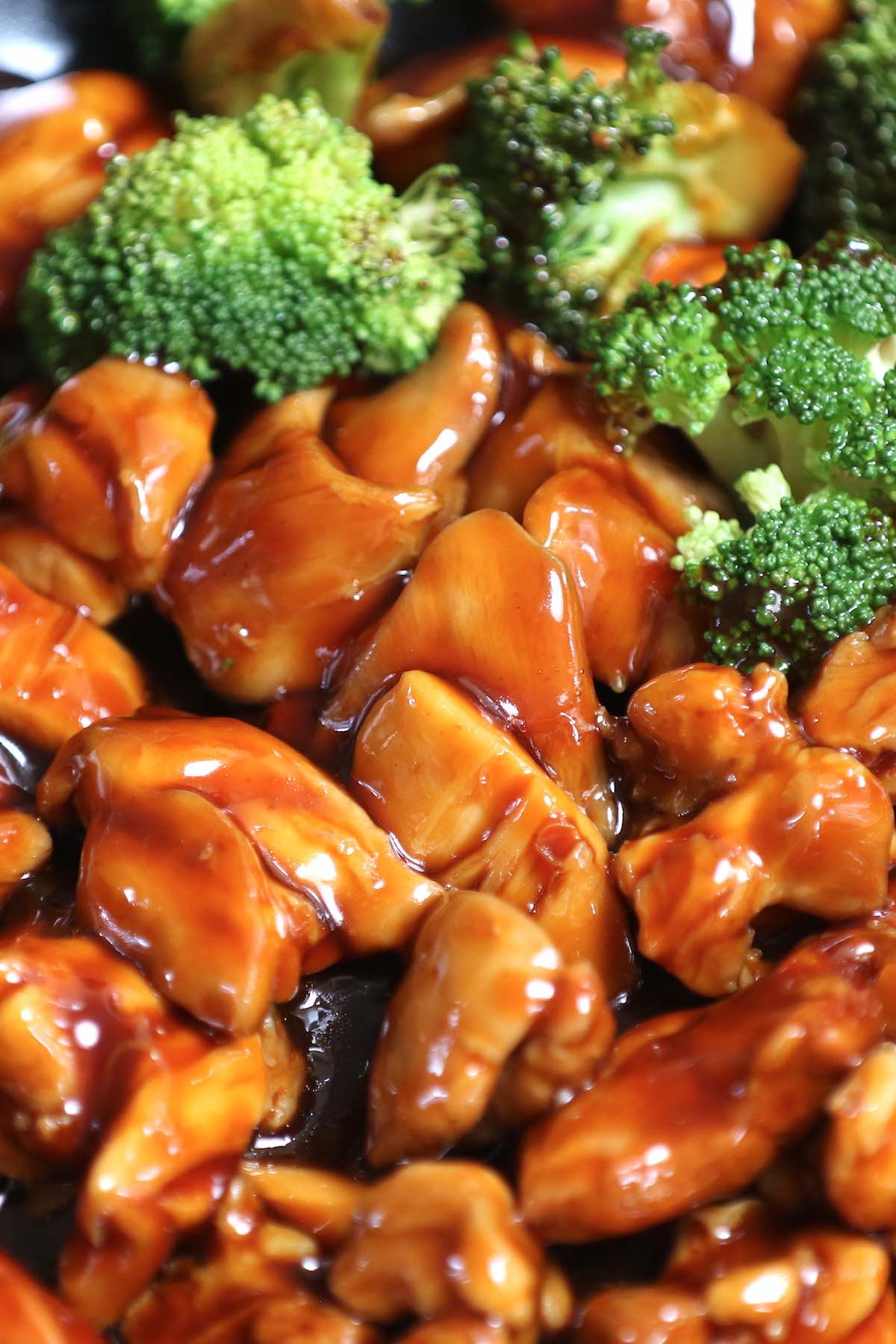
This is a lifesaver for an upcoming date night! Thanks!
Perfect. I am in india. A lover of everything japaneese especially food. Getting the right ingredients is a challenge. Shrimp tempura is easy. But sushi grade fish is not available …atleast fresh. Any suggestions. Will try and source local short grain rice.
Thank you any way. Will try my best